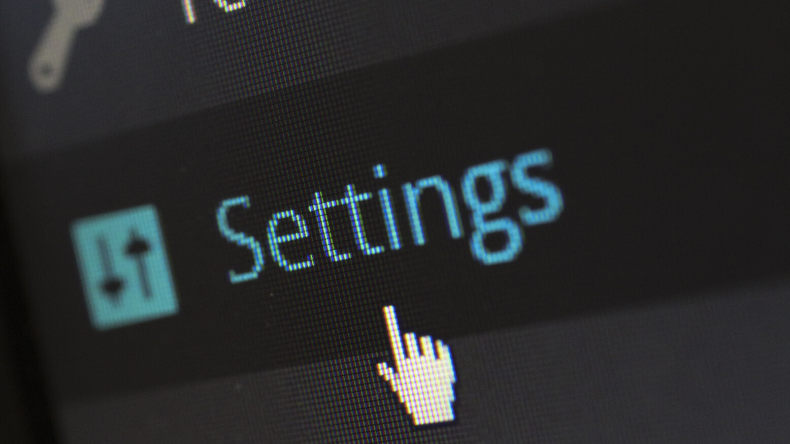Cybersecurity Best Practices for Working from Home
Minimize your work-from-home worries by securing your digital workspace with these helpful habits and practices.
Although some people have made it back to the office, there are still many continuing to work from home. Remote work poses different security risks than working from the office since most of us don’t have an in-home IT department to protect our data. We’ve collected some tips and tricks to help you keep your remote work environment secure. Whether remote work is a temporary measure or a way of life, cybersecurity should be top of mind.
Data Protection
Let’s start with something that seems straightforward but is often overlooked: keeping your work area secure. Make sure your desk is set up in a way that people can’t see your screen while you’re working and whenever you leave your working station, don’t forget to lock your computer screen. Sensitive information must be protected from unauthorized disclosure, modification, or loss—this obligation shouldn’t change when you work from home. If your housemates don’t have access to your regular workplace, they shouldn’t have access to your remote workplace either. Keep any work-related documents in a secure place, and make sure any company-supplied equipment is protected from unauthorized use and theft.
For convenience sake, some people use their own devices or equipment to work from home. If that’s the case for you, be vigilant with monitoring any work-related information saved to your personal devices. Having a separate folder on your desktop for work-related files is an easy way to find and delete those files when they’ve been transferred back to business workstations. And don’t forget to empty your trash bin! While it’s likely saved you on some occasions when you discover you’ve deleted something by mistake, in this situation the recycling bin could be a major liability.
Although storage devices like flash drives and portable hard drives are convenient, they can easily be misplaced due to their portable size. Instead of using physical storage, businesses should use cloud-based office suites and storage services to avoid the risk of loss or theft.

Computing Hygiene
Good computer hygiene is pretty easy once you’ve taken the initiative to be conscious of your online security.
Make sure to update your software regularly—it serves a really valuable purpose. Any device that will be used for work purposes needs to have the latest version of all software as these updates frequently include security patches for recently discovered risks. If you perform updates regularly, they don’t take much time—it’s when you click Remind Me Later a dozen times that you may looking at a lengthy update time.
Using antivirus protection is another simple-but-helpful habit. These endpoint protection solutions (such as McAfee, Cylance, Crowdstrike, Trend Micro, and Symantec) secure your computer by scanning your files and comparing a specific code to their database of known malicious code. They’ve been around for decades so you can find plenty of reviews to help you determine which one best suits your needs. To provide an additional layer of protection, we recommend regularly backing up your device to a work-approved cloud backup service. Having a recent backup will allow you to restore your data to the point before the malware was present on your system. Backing up data to a cloud service will also minimize the number of business assets stored on your personal devices.
If you’re using devices supplied by your employer, make sure they’re equipped with any virtual private network (VPN) services your office uses. These programs include security controls, such as filtering and logging, that are intended to prevent cyber impacts.

Social Engineering
Unfortunately, not everybody uses the internet for good, ethical purposes. Abrupt changes to business practices and work habits—such as an entire office working from home—may expose vulnerabilities that wouldn’t exist if you were in the office. Be smart and diligent about opening emails, downloading files, or clicking on links from unknown sources—just like you normally would. If an email seems suspicious, check the sender’s email address for spelling errors, watch for poor grammar, and hover over any links to see where it’s actually taking you.
Password Protection
Don’t forget about the importance of a strong password. Use a combination of numbers, symbols, and letters wherever allowed. Don’t use something that would be easy to guess like your birthdate or your street address. Make sure your password is at least 8 characters long—longer passwords help to stall programs that are designed to break into password-protected accounts.
Don’t share your password with others or share access to accounts; change your passwords regularly; and use different passwords for different accounts. If the thought of remembering all of your passwords concerns you, consider using a password manager to keep track—it’s a much better option than writing them all down in a notebook. Bitwarden is an excellent option.

For another layer of password security, set up two-factor authentication. This could be an email or text confirmation, or a biometric method like facial recognition or fingerprint scan.
While we’re on the topic of passwords,don’t forget about your router and printer. Any connected but unprotected device is a weak point that could be exploited. Many people don’t bother changing the password on their home router after it’s first installed, but it’s an easy and valuable step in securing your network.
Public Workspaces
As people take advantage of the flexibility of working from home, it is tempting to work somewhere outside of your home office such as a coffee shop. However, working in a public space can open a can of worms when it comes to the security of your work data. Strangers can easily glance at your screen while passing by, you could be connected to unsecured WiFi, and your devices with work-related information on them could be stolen. Although working remotely in a public space sounds appealing, it is important to be aware of the risks of doing so.
If you require further assistance or have more questions regarding the security of your home-based office, please call 1-844-SASKTEL to speak with a sales representative.
SaskTel experts know how to keep your business safe.
Revised Blog with updates from April 24, 2020.

Join the discussion